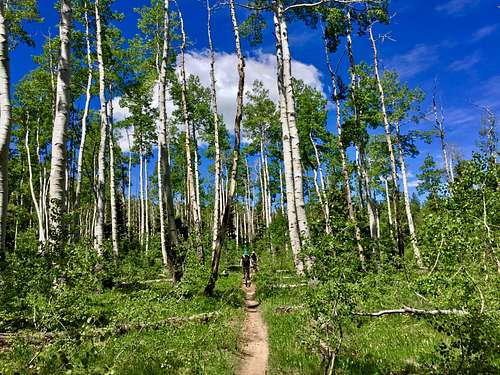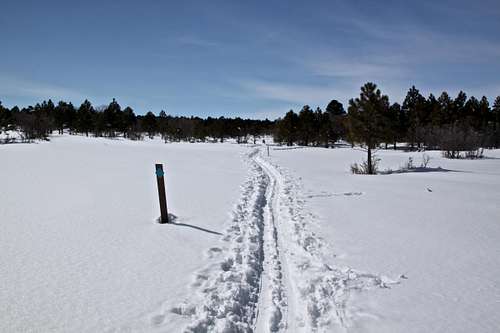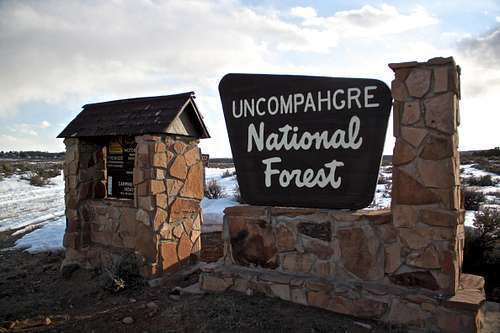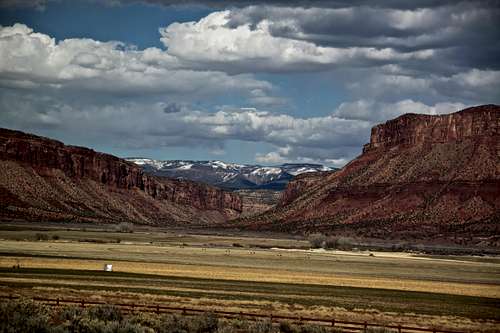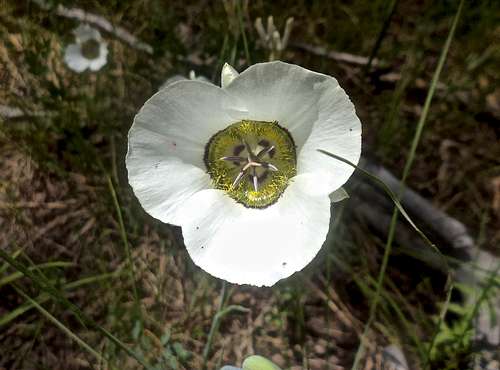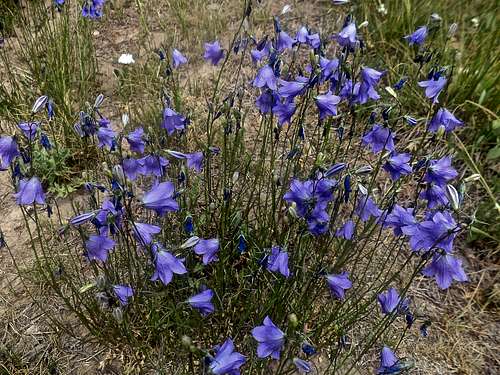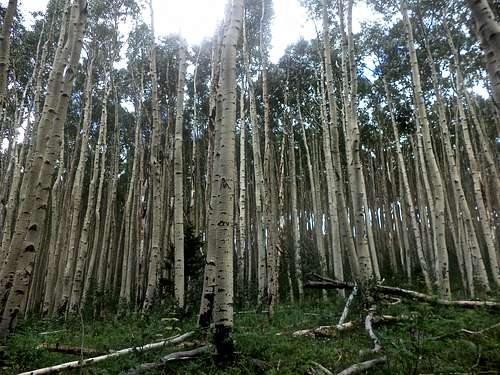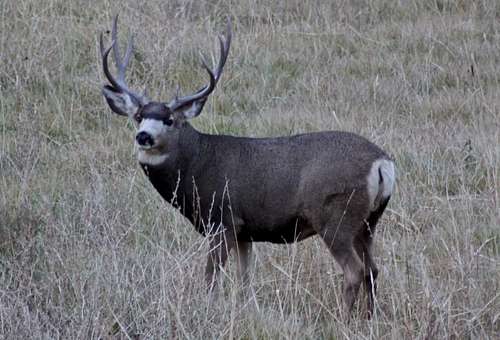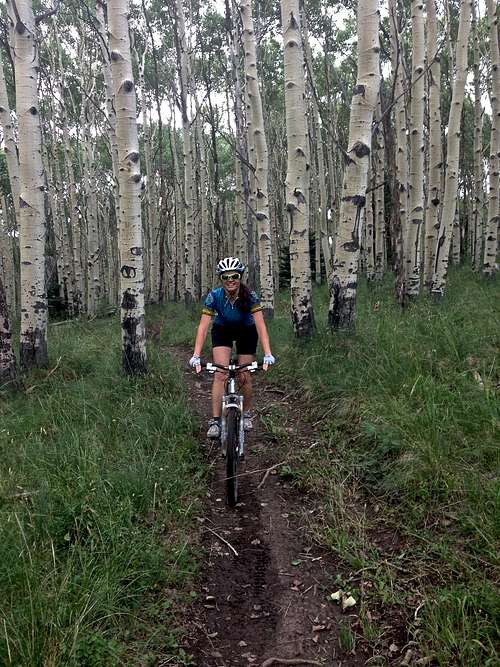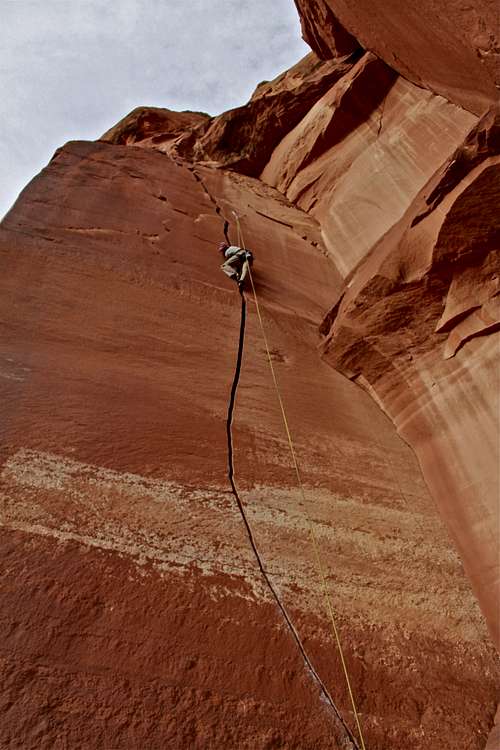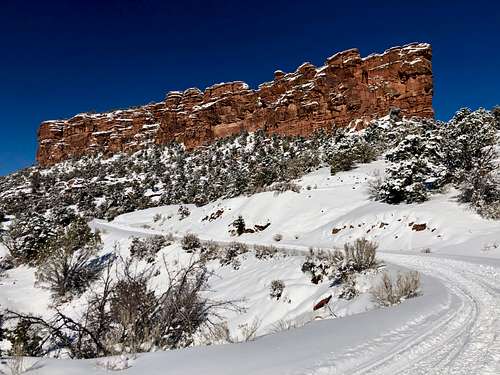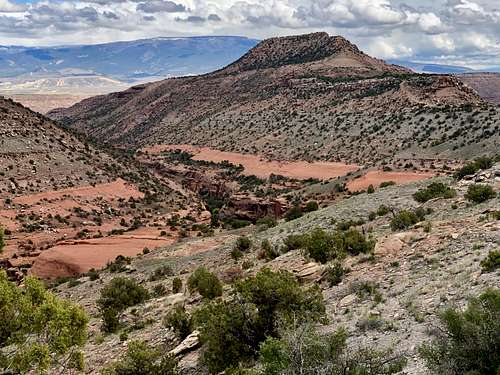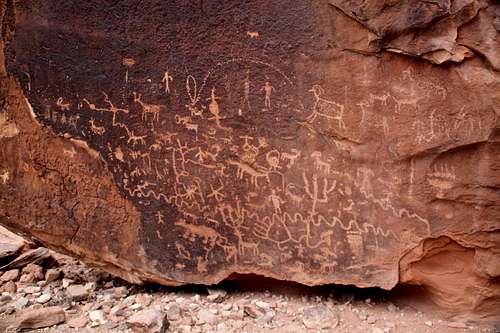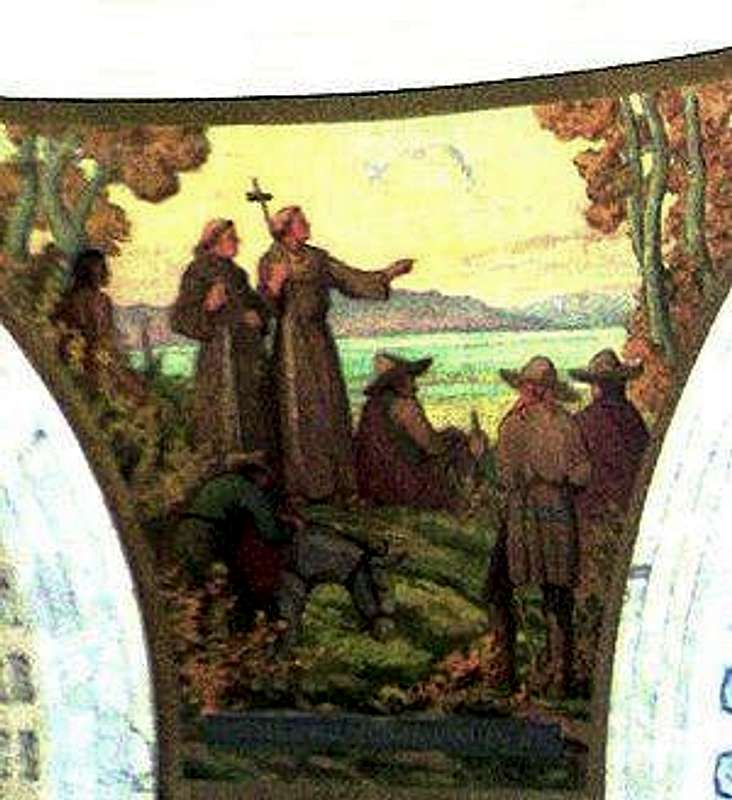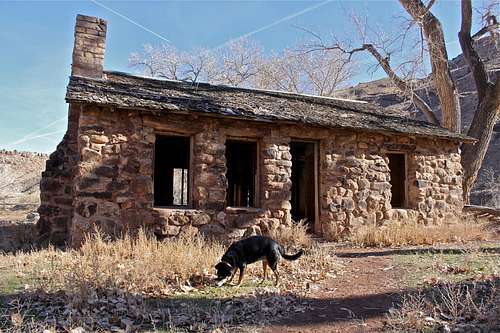-
 27686 Hits
27686 Hits
-
 93.47% Score
93.47% Score
-
 43 Votes
43 Votes
|
|
Area/Range |
|---|---|
|
|
38.19360°N / 107.1936°W |
|
|
Hiking, Mountaineering, Trad Climbing, Sport Climbing, Toprope, Bouldering, Canyoneering, Skiing |
|
|
Spring, Summer, Fall, Winter |
|
|
10347 ft / 3154 m |
|
|
Overview
I overlooked Uncompahgre Plateau for the first few years of my living in western Colorado, but then without realizing it I started to venture into this wonderful land, and fell in love with it. It offers many opportunities for hiking, mountain biking, cross country skiing and snow shoeing in the winter; rock climbing with well known destinations as Unaweep Canyon, Escalante, Dry Creek and crags by Naturita. It does deserve our attention.
Colorado is known for its mountains - Rocky Mountains occupy roughly the middle one third of the state. East of the mountains lies an expanse of fertile lands - prairies, and west of the main mountain chain is a vast area of plateaus, under the general designation of Colorado Plateau. Uncompahgre Plateau is a part of this Colorado Plateau. It features some minor humps along the crest, none of which would be of particular interest to the mountaineer. However, it is for the side canyons that one would visit this place. One can view Uncompaghre Plateau when driving on Hwy 550 from Grand Junction south towards Ridgway/Ouray/Telluride area - it does not look very impressive from the highway, but beautiful hidden spots await you if you decide to visit.
Located in Southwest Colorado, the Uncompahgre Plateau is area bounded by Highway 62 on the south, the Gunnison and Uncompahgre Rivers on the east, Colorado River on the north, and San Miguel and Dolores Rivers on the west. The plateau is surrounded by paradoxes. South of the Plateau are the rugged San Juan Mountains, rich with history of gold and silver mining. Dolores river on the west side flows perpendicular to its valley = Paradox Valley, and the Unaweep Canyon drains in two directions (Unaweep Divide). Gunnison River has cut one of the greatest gashes on earth when much easier course was a short distance away.
The Uncompahgre Plateau sweeps about 100 miles across Western Colorado, and encompasses 2,290 square miles (=5,900 km2). Approximately 75% of the land is public. The USFS manages 37%, BLM manages 37%, and the State of Colorado manages 1%. Federal land administration on the Plateau is shared among three USFS Ranger Districts and two BLM offices. Private land accounts for 25%, and is located primarily near the Uncompahgre Valley. The Uncompahgre Plateau is divided among five counties - Delta, Mesa, Montrose, Ouray, and San Miguel.
Historically there was a lot of mining activity in the northwestern portion of the Plateau. Names like Uravan, Nucla give you an idea that uranium and vanadium was found here.
Guide to the Colorado Mountains (The Colorado Mountain Club Guidebook) gives Uncompahgre Plateau two pages, mostly recommending exploration along the Divide Road and exploration of its canyons. Probably the best guidebook for the area would be "Uncompahgre: A Guide to the Uncompahgre Plateau" by Muriel Marshall.
Geography
The Uncompahgre Plateau is one of the major geologic uplift formations in the region.The Pleateau watersheds include four major drainages of the Colorado River: Dolores, Gunnison, San Miguel and Uncompahgre.
The Divide Road is the primary road on the Plateau running northwest and southeast from one end of the Plateau to the other. Major roads connecting with the Divide Road include Dave Wood Road, Highway 90, the Transfer Road, and 25 Mesa Road. One can access the Divide Road from several approaches; the Delta-Nucla Road (FSR 503), or via Montrose on FSR-9 (old Hwy 90). The classic auto tour of Uncompahgre Plateau is the full length of the range from Sanborn Park Road off Hwy 141 4 miles east of Norwood, to the road end at Unaweep Canyon on Hwy 141 10 miles southwest of Whitewater on US-50.
Vegetation
The Uncompahgre Plateau supports a wide variety of plants. Annual precipitation varies from less than 10 inches at the lowest elevations to more than 30 at the higher elevations. Snowfall accounts for the majority of the precipitation.Below 6,000 feet near the Dolores, San Miguel, Uncompahgre and Gunnison Rivers, a salt-tolerant, desert plant community is the predominant vegatation. Species include: four-wing saltbrush, shadscale saltbush, black sagebrush, winterfat, rabbit-brush, cacti, snakeweed, greasewood. In the Uncompahgre Valley and the area around Nucla land was cleared and aggriculture dominates.
Riparian areas on the Plateau are limited. In lowland the dominant native species include coyote willow, narrowleaf cottonwood, boxelder, chokecherry, sumac, silver buffalo berry, hawthorn, cattail, rushes and a variety of grasses,
sedges, and forbs. Willows, birches, thin leaf alder, and blue spruce are characteristic of higher elevation.Between 6,000 to 7,500, pinon pine and juniper are predominant. Pinon-juniper forest cover approximately 40% of the Uncompahgre Plateau. Other species are sagebrush, cacti, saltbushes, western wheatgrass, Indian ricegrass, and a variety of forbs.
Above 7,500 feet, oak and ponderosa pine become more prevalent. You can also see mountain mahogany, mountain big sagebrush, snowberry, and bluegrass. On the northwest side of the Plateau, manzanita is also common shrub.
Above 8,000 feet, the mountain shrub/Gambel oak and pine/oak communities transition into aspen and spruce/fir forests and open meadows.
The only federally listed threatened and endangered plant known to occur n the Plateau is the Unita Basin hookless cactus (Sclerocactus glaucus). The Uinta Basin hookless cactus is found on Salt-Desert/Grassland sites west and northwest of Delta in the vicinity of Cactus Park, lower Roubideau, lower Escalante, and McCarty Bench.
Wildlife
Activities
Summer: hiking, trail running and mountain biking ListSummits of Uncompahgre Plateau
| Horsefly Peak | 10,347 | The highest point of Uncompahgre Plateau, unfortunately the summit is on private land. |
| 9904 | 9,904' | Class 2 hike with great summit cairn and views. Part of mountain biking Rim Trail Loop. |
| Spruce Mountain | 9,731' | Class 2 hike along Forty Seven Road. Rise 312 feet. |
| Uncompahgre Butte | 9,679' | Class 1 hike along Divide Road. Rise 499 feet. |
| Snipe Mountain | 9,326' | Class 2 hike, rise 466 feet. |
| Thimble Rock Point | 8,769' | Class 2 hike, could be mountain biked most of the way, great views into Unaweep Canyon. |
| 7182 | 7,182' | Fun short scramble at class 3 difficulty, located at the start of Divide Road in Unaweep Canyon, great views. |
| Triangle Mesa | 6,255' | Class 2 hike overlooking Dominguez Canyon, great scenery and views. Rise 475 feet. |



